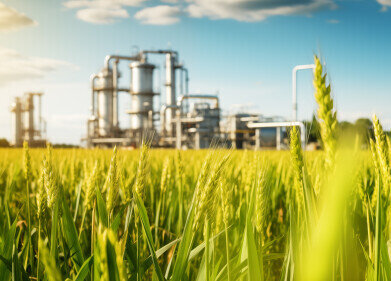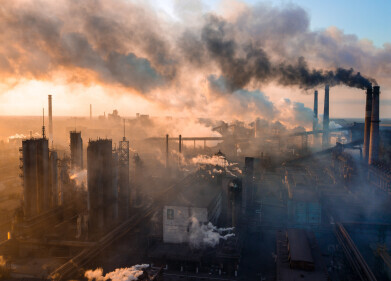Fuel for Thought
What is Natural Gas?
Jul 17 2014
Composition of Natural Gas Fuel
The natural gas used in our homes and businesses as a source of fuel is predominantly methane (CH4). It will contain small amounts of heavier hydrocarbons (C2H6, C3H8 etc.), with trace amounts of non-hydrocarbons.
Over 99% of the natural gas used as fuel has been processed from raw natural gas. This raw natural gas can come from several sources. It is likely that the clean gas used as fuel is a mixture of processed raw gas from different sources. For safety and environmental reasons, it is important that the composition of the gas is known post-processing and that the impurities are removed. Impurities can cause corrosion of the pipelines and containers used to transport and store the gas.
Sources of Raw Natural Gas
As stated, the majority of the natural gas we use has come from underground reservoirs containing oil and gas or just gas. The gas in these reserves was created millions of years ago due to either biogenic or thermogenic decomposition of plants or marine animals. During the decomposition methane is released and can migrate through porous rock formations. The reservoirs where the gas is found are in sedimentary rock formations (which are porous) and are trapped by an upper layer of impermeable rock. There are different types of sedimentary rocks that can contain gas including sandstone, coal seams and shale beds. The type and depth of sedimentary rock determines how easy it is to release the gas, which has an effect on the economic viability of the reservoir.
Another source of methane is from biological sources, this is known as biogas. There are several different pathways to produce methane this way, but most rely on methanogens, microorganisms that produce methane as a result of them decomposing organic matter. Examples of sources of biogas in commercial use include:
- Landfill gas
- Sewage plants
- Agricultural waste
Composition of Raw Natural Gas
Raw natural gas found underground is a mix of hydrocarbons with some other components including nitrogen, water and carbon dioxide. Useful energy is derived from the hydrocarbons with the other constituents considered as non-energy components, but necessarily as waste. The composition of raw natural gas varies between different gas fields. A typical composition would fall within the following values:
|
Compound |
Formula |
% Composition |
|
Methane |
CH4 |
70-90 |
|
Ethane |
C2H6 |
5-15 |
|
Propane |
C3H8 |
<5 |
|
Butane |
C4H10 |
|
|
Carbon Dioxide |
CO2 |
0-8 |
|
Oxygen |
O2 |
<0.2 |
|
Nitrogen |
N2 |
0-5 |
|
Hydrogen Sulphide |
H2S |
0-5 |
The hydrocarbons removed from the raw gas can be used as a chemical feedstock or as fuels. Propane is used as a heating and cooking fuel in domestic and commercial properties. Butane is used as a portable gas supply and is widely used as camping gas.
The composition of biogas depends on the process that made the gas. The methane quantities are significantly lower at 50-70%. The volume and quantity of biogas means that the production and supply is mainly on a local scale.
For further detail about this topic, this article reviews the physics of natural gas sampling, including phenomena such as adsorption and desorption, vapour-liquid equilibrium.
Digital Edition
PIN 25.1 Feb/March
March 2024
In This Edition Safety - The technology behind the ION Science Tiger XT - Safety with ammonia and LOHCs as hydrogen carriers Analytical Instrumentation - Discussion on new tribology te...
View all digital editions
Events
Apr 30 2024 Birmingham, UK
May 03 2024 Seoul, South Korea
May 05 2024 Seville, Spain
May 06 2024 Riyadh, Saudi Arabia
May 06 2024 Houston, Tx, USA


















